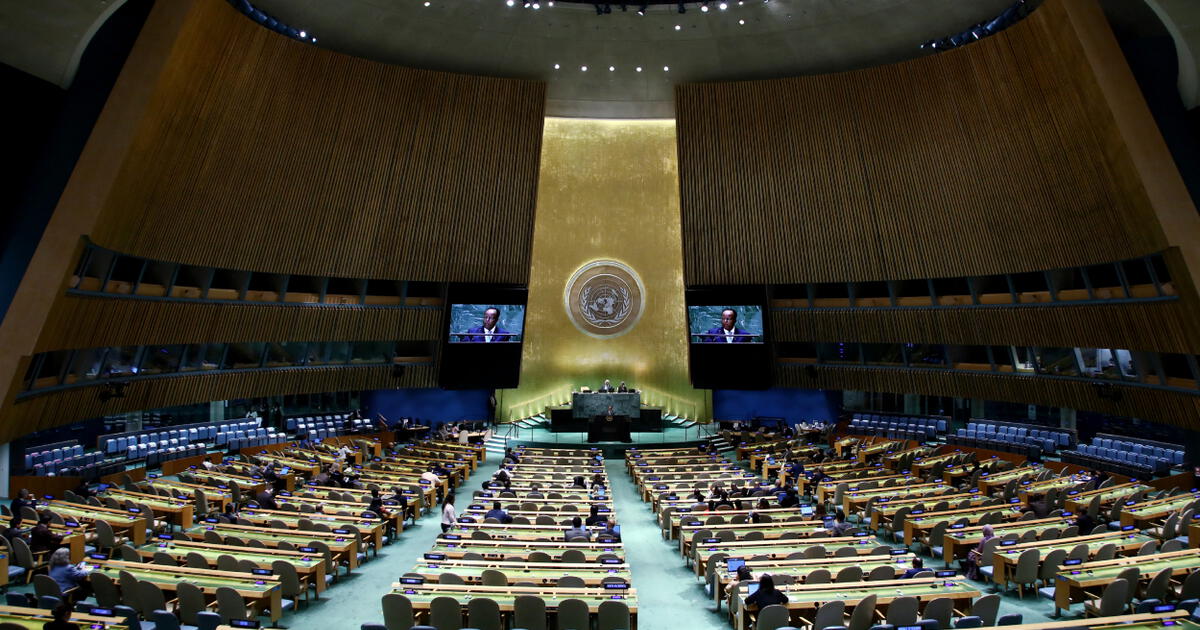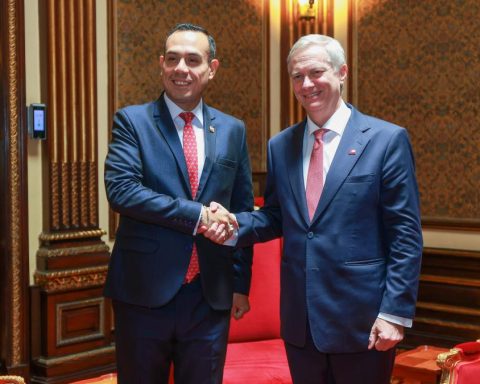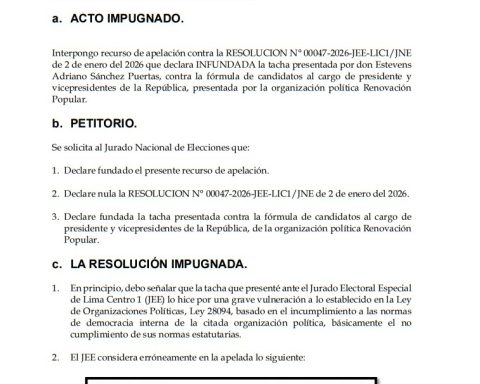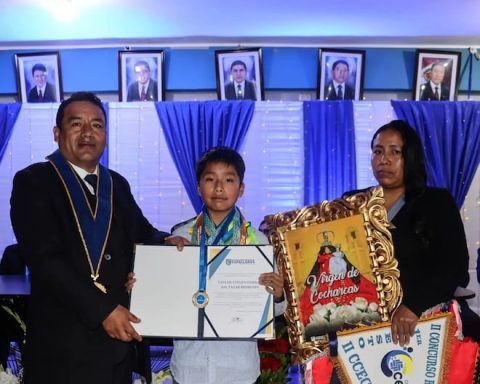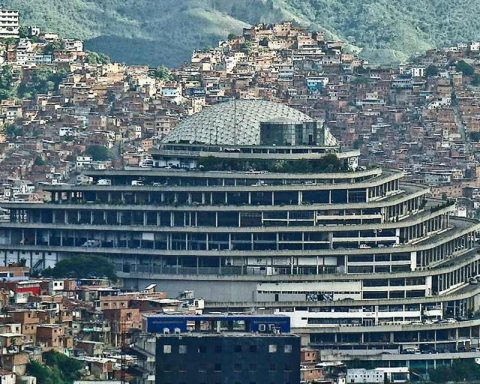Last Sunday, September 22, at the United Nations General Assemblyin New York, 143 member states voted in favor of the so-called Pact for the Future, a document that contains 56 actions to face “the challenges of the 21st century” and that must be resolved “with 21st century solutions,” according to the expressions of the UN Secretary General himself, Antonio Guterres.
The Pact for the Future seems to be an ambitious document to face the greatest challenges of our time, on issues such as the reform of the UN Security Councilthe global financial architecture, climate change, artificial intelligence. But a Peruvian political sector and some governments around the world have not taken the matter well at all.
To begin with, the Municipality of Limaled by the mayor Rafael Lopez Aliagaapproved a motion in which it asks the Foreign Ministry and Congress to disassociate themselves from the so-called Pact for the Future because “its objectives are harmful and aggressive to our society.”
Renovación Popular, the mayor’s party, is leading a crusade in that same sense, rejecting the agreement at the United Nations.
The attacks against the global agreement also came from Congress. The parliamentarian of the RP bench Jose Cueto sent a letter to the president of the Foreign Relations Commission, Auristela Obando, requesting that Foreign Minister Elmer Schialer be summoned to explain why the Peruvian Government voted at the UN in favor of the document.
“Is the Future Pact binding on the Peruvian Government? What consequences can it bring if it is partially or totally breached?” Cueto asked in his request.
A minority of countries oppose the Pact for the Future, based on the 2030 Agenda, which was approved in 2015. Photo: AFP
Other congressmen joined the chorus of rejection. Patricia Chirinoswho recently resigned from Avanza País, said in his style: “Once again, Mrs. Boluarte is on her knees before the interests of the international left! This Government prefers to turn its back on the Peruvians, it completely ignores what the country really needs! Sovereignty is not negotiable!”
Other congressmen, such as Luis Flores (AvP), joined the campaign against the Pact for the Future, which is based on the 2030 Agenda and the Sustainable Development Goals, approved by the UN in 2015.
For Flores, it is a plan “promoted by the progressive left” and attacks sovereignty and “the traditional values of our society.” He added that “under the guise of ‘sustainable development’, they seek to impose the interests of globalist elites who try to “destroy the cultural and social fabric of nations.”
Another far-right activist, Mrs. Giuliana Caccia, about to be excommunicated by the Vatican due to the Sodalicio case, unleashed an intense campaign on social networks against the so-called Pact for the Future, recording several videos alongside Agustín Laje.
Why has the so-called Pact for the Future aroused the ire of the Peruvian extreme right, but also of countries such as Russia, Venezuela, Nicaragua and the Argentina by Javier Milei?
The Peruvian position
Those who criticize the agreement affirm, as Cueto slips in his letter, that it affects the country’s sovereignty. But at this point, Peruvian Foreign Minister Elmer Schialer specified in his speech at the headquarters of the UN: “Peru understands the Pact for the Future as a tool that must respect the sovereignty of States and must promote cooperation based on solidarity, mutual respect and equity.”

Chancellor Elmer Schialer. He called for building a world order based on respect. Photo: AFP
Schialer emphasized that the agreement “will never be an imposition or an agenda that erodes our traditions or our internal legal order” and rather considers it a platform that allows us to work, with other nations, to face “the challenges that we share, such as the struggle against poverty and a more just and equitable world economic order.”
The professor in Political Science of the PUCP Gonzalo Alcalde explained that the Pact for the Future seeks to accelerate progress towards achieving the Sustainable Development Goals (SDGs) of the 2030 Agenda (today Agenda 2045) and proposes to transform global governance, “addressing challenges such as inequality, climate change and financial imbalances.
Mayor, an expert in public policies, indicates that there is a wave of misinformation against the agreement. Among the ‘myths’ created are an alleged threat to national sovereignty, that the points discussed were not consulted, that a ‘socialist style’ is desired to be imposed, etc. Mayor specifies that the agreement is voluntary, it is not binding, it was negotiated by representatives starting in 2012, and rounds of consultations were carried out at the national and global level.
Igor Garafulicuntil a few days ago resident coordinator of the UN in Peru, said that the Pact for the Future “will bring us closer to a fairer global financing system and a safer, more peaceful and sustainable planet, where technology is at the service of humanity.” ”.
He Pact for the Future It foresees 56 “actions”, divided into 5 main axes, to face the “increasing catastrophic risks”. In challenges such as peace, international law, reform of the Security Council, climate change or potential threats from AI.
In peace, for example, the commitment to eliminate nuclear weapons is underlined. Economically, it is proposed to “accelerate the reform of the international financial architecture”, so that excluded states have easier access to financing for development.
Also adopted was the Global Digital Pact to reduce the digital divide and develop technologies for all.
One of the points that generated the greatest conservative opposition is the one that seeks to achieve gender equality and the empowerment of women and girls.
